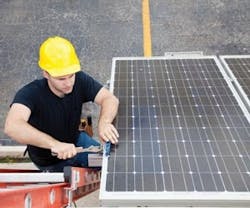Eight Tips for a Successful Roof Audit
With warmer temperatures come more favorable opportunities to inspect and repair your building’s asphalt roof. Before you head to the rooftop, consider these tips from the Asphalt Roofing Manufacturers Association (ARMA) to ensure that your audit is safe and successful.
- Inspect the roof annually to evaluate its general condition and detect potential problems before a leak develops. If severe weather conditions have occurred, conduct an inspection afterward to look for damage the weather might have inflicted.
- Keep gutters and roof surfaces clear of fallen leaves, pine needles, twigs, and other litter so that water can drain freely.
- Keep trees trimmed to prevent branches from scuffing the roof surface. This also helps keep the roof drier, which inhibits the growth of algae, mold, fungi, or lichen. Climbing roses, vines, and ivy should be consistently trimmed back from the roof.
- Prevent ponding water, which can have severe negative consequences on all types of roofing systems. Ponding water contributes to algae and vegetation growth and accelerates membrane erosion and deterioration. It also substantially increases the load on roof decks, which increases deck deflections that result in additional ponding water. Left alone, the accumulating water can compromise the structural integrity of the deck. If moisture penetrates the roof membrane, it can reduce the insulation’s thermal efficiency and seriously damage the deck, insulation, membrane, and building exterior.
- Don’t allow water from a downspout to pour directly onto a roof below – it creates additional wear to the shingle surface. Connect all upper story downspouts to a lower level gutter with drains installed on the lower roof.
- When removing snow or ice from a valley or other roof areas, take care to avoid damaging the roof. Use a soft-bristled broom or long extension pole for safety and never allow shovels to make direct contact with the roof surface. Never climb onto a wet or snow-covered roof.
- When workmen have to work on the roof to service or install a solar collector, antenna, or other roof element, require them to use care to protect the roof. This can include using walkway panels as a path to roof equipment that requires regular maintenance.
- Whenever a new element is added to the roof, make sure proper flashing procedures are followed to protect the roof’s integrity. Use anchors made of non-corrosive materials to eliminate the possibility of metal discoloration or “iron stains” on the roof.
